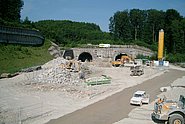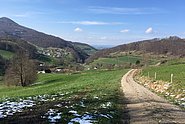Soil is defined as a biologically active mixture of organic matter, minerals, liquids, and gases built up from horizons consisting of different proportions of these components. It is the result of a long weathering process driven by biological, climatic, geological and topographic influences. Road construction entails soil sealing, compaction, pollution, and disposal of surplus material which compromise the soil functions with direct and indirect negative impact on people and their environment. Damage on soil must be avoided, mitigated, or compensated for. Therefore, we assessed guidelines, soil information and best-practice examples of soil protection that relate to the planning and construction phase of a road construction project in the previous work package 4 of the RoadSoil project (Deliverable 4.1, 4.2). We concluded that although a considerable number of guidelines and other information is available in the investigated countries, there are still difficulties in implementation. For this reason, we suggested to further investigate which measures are known and implemented among European experts in the field of soil protection and road construction. Further, to what extent these measures are considered effective and feasible by the experts. And finally, which problems prevent the implementation and what are potential solutions to solve them. [...]
Siehe Institutional Repository DORA

